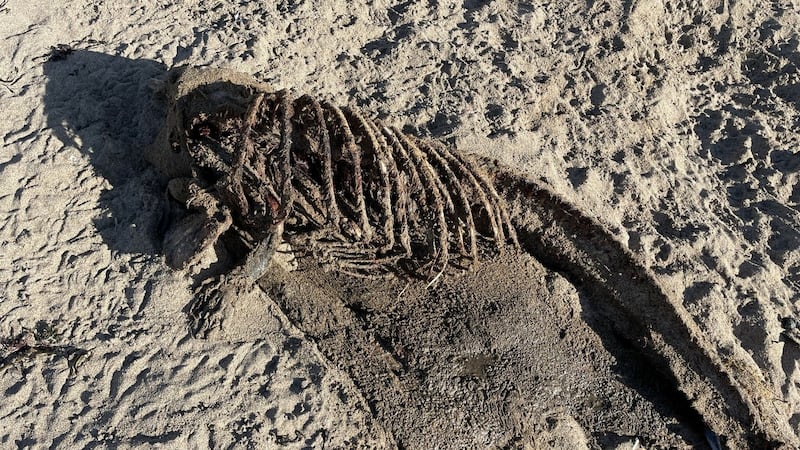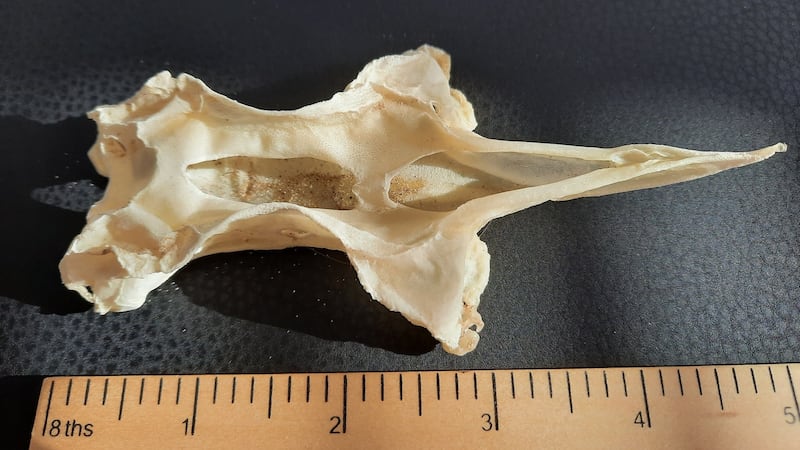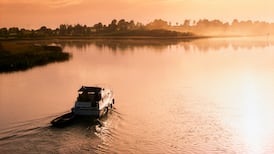I recently saw this dead eel on Killiney beach in Dublin.
Patrick Rogers
It is a young conger eel. Adults can reach 2 metres in length, and its habitat is among rocks and wrecks in both deep and shallow water. Its upper jaw is fractionally longer than the lower and it has a bite strong enough to remove an adult finger.

I found this skeleton on a beach near Hook Head in Co Wexford and wonder what it might be because of its very long tail and what appear to be fingers. There was a seal carcass nearby, but this looks very different.
Heather Dunwoody
It is the carcass of a seal pup. It is broken up at the rear and seems to be missing its back legs. The fingers are its front flippers. Two species of seal – the grey and the common – occur around the coast, but which species this is is impossible to tell from the photo. Common seals give birth in June-July while grey seals pup in September-October.


Angela Buckley found this on a beach in Co Kerry and wonders what it is, as it feels like cartilage rather than bone, while Carla Mc Elwee noticed this on her beach peregrinations and is equally puzzled as to what it might be.
They are both the cartilaginous skeletons of long dead rays. The one with the ruler beside it is the carapace of an adult ray, and the other one upside down with its stomach picked out is a juvenile ray. Rays belong to a group of fish (along with skates and sharks, known collectively as elasmobranchs) whose skeleton is composed of cartilage rather than of bone as in most other fish.
Kevin Flannery is chairman of the Irish Elasmobranch Group, which has produced a booklet, Irish Sharks, Skates and Rays, for schools and anyone interested in this fascinating and endangered group. If you would like one, i mbéarla nó as Gaeilge, send a stamped address envelope to him at Oceanworld Aquarium, Dingle, Co Kerry.
Have you a nature query, observation or photo you would like to share with The Irish Times? Submit it, with location of the image, via our website irishtimes.com/eyeonnature



















